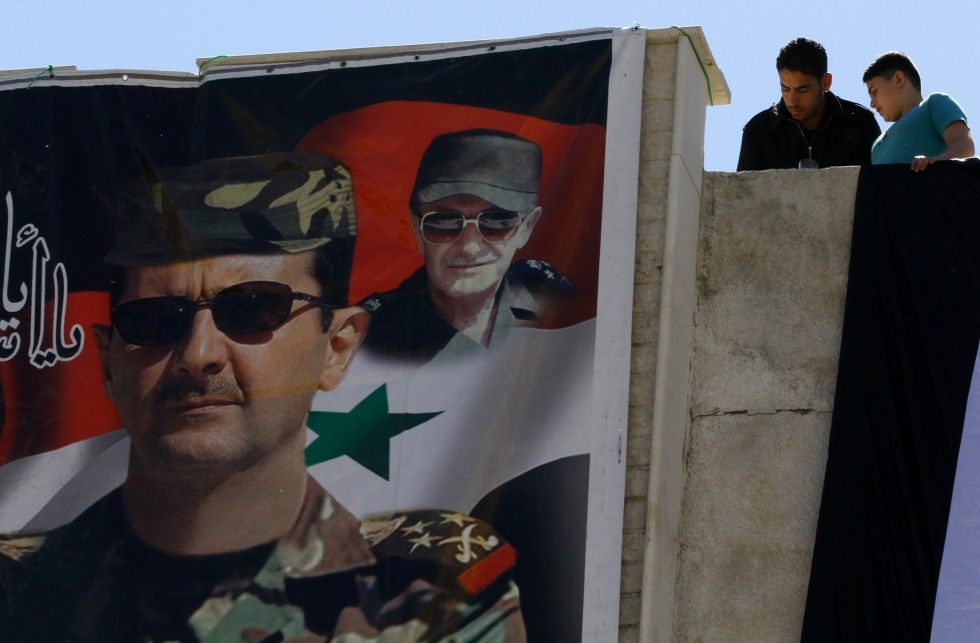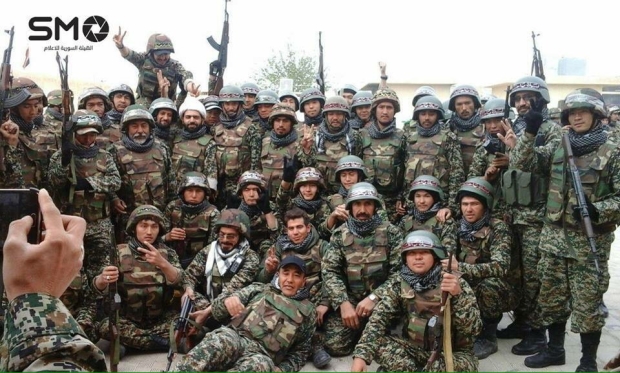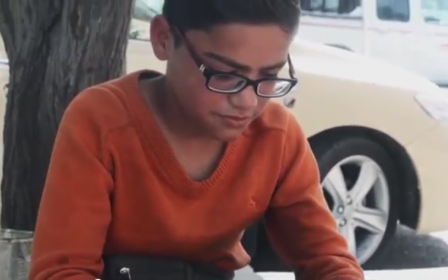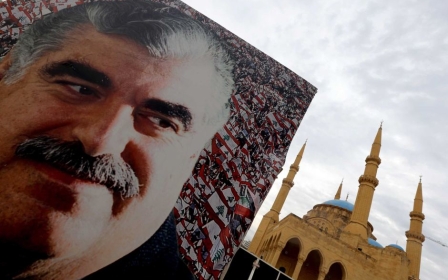Afghan fighters an increasingly significant player on Syrian battlefield

As Iran has stepped up military support for its increasingly beleaguered ally Bashar al-Assad, new faces have been appearing on the Syrian battlefield: Afghans.
Reports from opposition fighters and civilians on the ground in southern Syria paint a picture of an increasingly internationalised government fighting force. According to opposition and independent monitoring sources, up to 80 percent of loyalist fighters on the ground in Dera’a province are not from the Syrian Arab Army or from Syria’s National Defence Forces, but are instead from abroad.
Shia fighters from Iran, Iraq, Lebanon and even Yemen have become a common sight in southern Syria, but lately, militants, civilians and Syria-watchers report a surge in Afghan fighters, particularly Afghan Hazaras from the Fatemioun Brigade.
Qassem Soleimani, Iran’s top general, was photographed in Syria in late February with some members of the brigade, all of whom have since been killed.
According to Syrian opposition media, the man second from the right was killed while fighting in Lajat, Dera’a province, on 20 April. Issam al-Rayyes, spokesperson for the opposition Southern Front, said there were “several dead Afghans” at Busra al-Harir, and “five or six” killed at Lajat.
Syrian activists and opposition media are awash with photos and videos of Afghan fighters being killed, captured and in one case, questioned about their origins and whether they speak Arabic or are “made in China”.
Five days after rebels fighting in Lajat captured a man, he resurfaced in an activist video taking part in a dance lesson with Sunni fighters, drinking and smoking as he answered questions.
Another widely-circulated photo, taken from a mobile phone captured by Syrian opposition fighters after fighting in Lajat, Dera’a, shows the Fatemioun Brigade mustered for that very battle just days before.
Lebanese news media featured a formal questioning of the Afghan fighters who survived the battle and were captured.
Notable increase
Phillip Smyth, a prominent researcher of Shia militant groups, has documented evidence of Afghan Shia fighters in Syria as early as October 2012. He has observed a notable increase of these fighters in recent weeks and months.
“It’s symbolic of how the Iranians are using them as another force of Shia fighters to supplement the foreign fighters initially brought in from Iraq,” he said.
According to Smyth, Iran instituted a comprehensive recruitment program for Afghan Shiites in late 2013. This programme gathered speed in 2014, and has been used to complement Hezbollah’s role in Syria.
“Lebanese Hezbollah has been doing a lot of the heavy lifting in Syria, especially recently, and they’re trying to recruit enough people and take charge of larger geographic zones of responsibility. In many ways, the addition of these Afghan Shia fighters helps aid with that process,” Smyth said.
The timing of the surge comes down to a weakening Syrian Arab Army and a change in the weather.
“As the snow melts, conditions throughout Syria and parts of Lebanon get better for Syrian rebel and Sunni jihadist forces. Thus more fighters are needed to counter those developments. The Hazara Shia, which make up a very large population and were primarily made refugees by groups such as the Taliban, form a perfect group to utilize in a sectarian war in Syria,” said Smyth.
Hazaras are the third-largest ethnic group in Afghanistan and are mainly Twelvers, the largest branch of Shia Islam. The men fighting in Syria are ideologically motivated - they are Shiite militants defending their faith against Sunni militants - and rebel spokesperson al-Rayyes said this is evident on the battlefield: “These guys fight to the death, they are ready to die.”
But ideological motivations don’t tell the whole story. The Hazaras are widely regarded as the underdog, caste-wise, to the Pashtun people. Many Hazaras have fled to Iran and are living there as refugees, where they are “second-class citizens”, said Iran commentator Potkin Azarmehr.
“Most of the Afghan Hazaras in Syria were refugees in Iran, and they’re lured by the rewards they get in Iran, which include permanent residence in Iran for them and their families,” said Azarmehr.
Powerful enticements
The men are also well armed and well compensated. In a recent interview one Fatemioun member disclosed the group’s rate of pay: between $500 and $700 per month, astronomically high on a battlefield where many professional soldiers are taking home much less. Even among the US-backed rebel groups operating in Syria’s south, most men are reported to be making under $100 per month.
For people who, in Azarmehr’s words, are used to being “persona non grata”, income like this and the reward of legal status can prove powerful enticements. And for the Syrian government, on the back foot in Idlib, Quneitra and Dera’a provinces, a well-equipped fighting force of men prepared to die for their faith, handsomely paid by a long-time ally, makes perfect sense.
But as Afghans stream into Syria by the hundreds and thousands, joining Iranians, Lebanese and Iraqi Shia fighting in a Hezbollah and Iranian-led offensive based less on the nation-state and more and more on faith, the question becomes how quickly and easily, if at all, Assad will be able to exert authority over the foreign boots on ground that is, ostensibly, still his.
Middle East Eye propose une couverture et une analyse indépendantes et incomparables du Moyen-Orient, de l’Afrique du Nord et d’autres régions du monde. Pour en savoir plus sur la reprise de ce contenu et les frais qui s’appliquent, veuillez remplir ce formulaire [en anglais]. Pour en savoir plus sur MEE, cliquez ici [en anglais].






